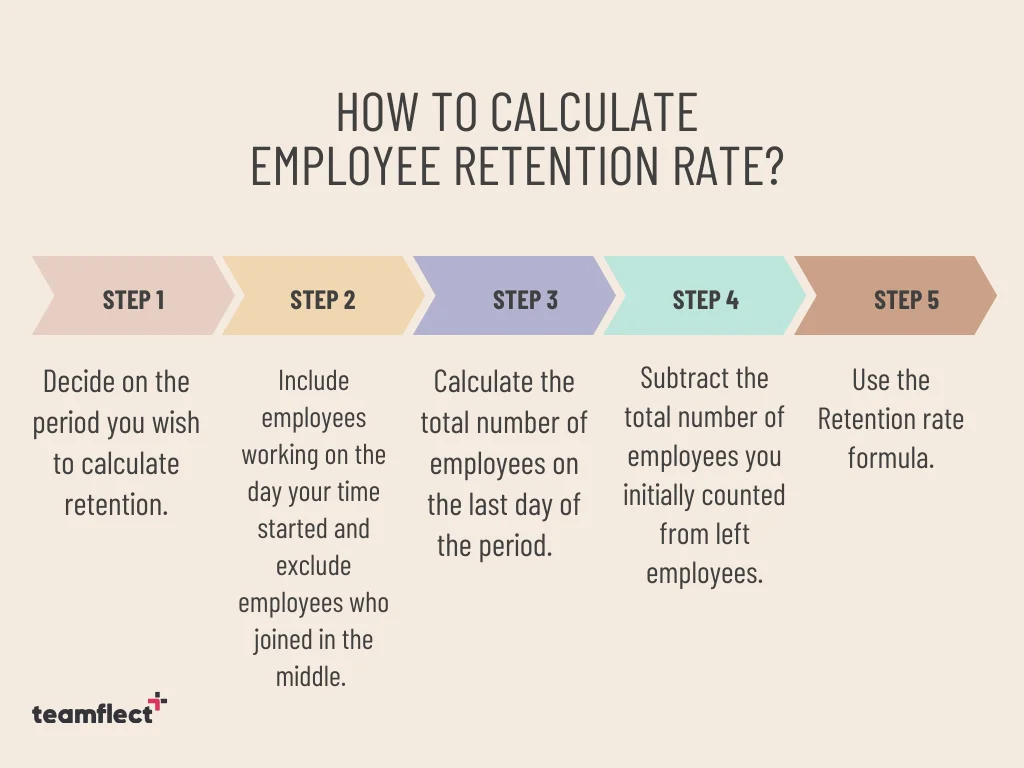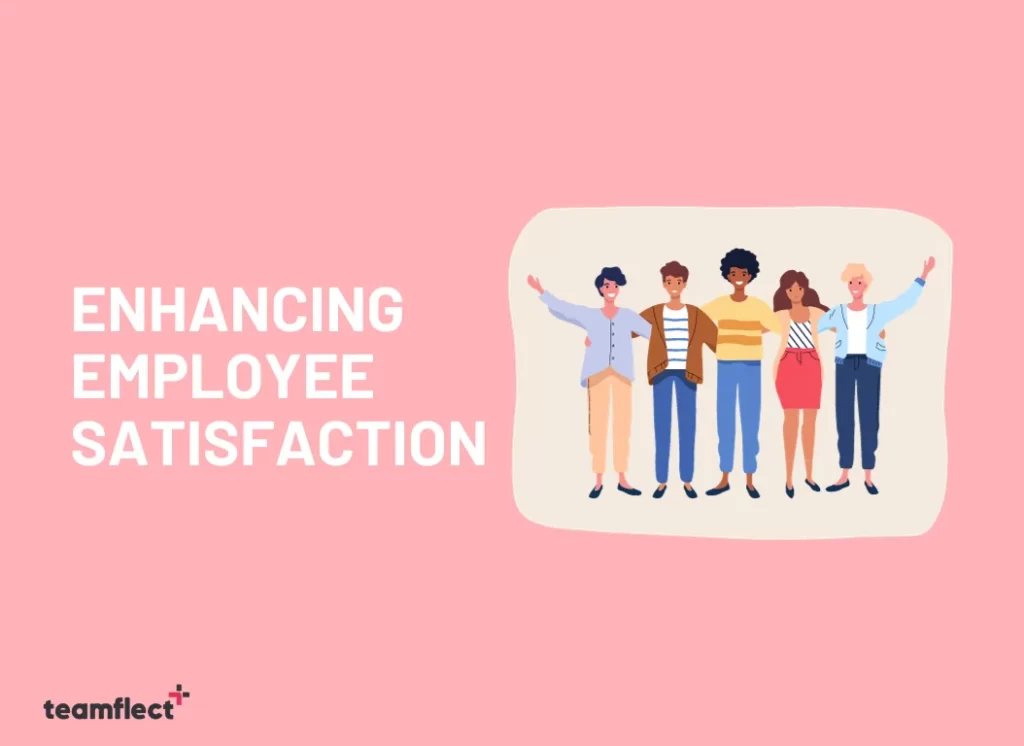Employee retention is described as a company’s ability to retain employees over time and build a strong relationship.
It also gives a better idea about the percentage of current employees that remain employed after a certain amount of time, and this can help prevent skilled employees from leaving the company, as well as aid in enhancing policies and practices within an organization to encourage employees to stay and fulfill their responsibilities efficiently.
Tracking employee retention could help you keep your best performers while building loyal, engaged, and goal-oriented team strategies.
Learning to calculate your company’s employee turnover or retention rate also will help you see how your employee engagement strategy successfully or poorly retains your current employees.
Table of Contents
What is Employee Retention Rate?
The percentage of workers who stay employed during a given time period is measured by the employee retention rate.
This crucial data enables businesses to evaluate the efficacy of their human resource strategies. This covers strategies for developing engagement and employee development initiatives.
A high employee retention rate is a sign that your business is doing a good job of meeting the demands of its employees, which will boost loyalty, productivity, and performance as a whole.
A poor rate of employee retention may be a warning of possible problems for your team. This can be due to insufficient communication, low pay, or a work climate that doesn’t support employees’ growth.
Why Employee Retention Rate Is Important?
Employee retention rate calculation is vital for several reasons:
- Strengthen Decision-Making
First, employee retention saves money associated with turnover and allows organizations to navigate various scenarios better and make wise business decisions.
- Increase Productivity
The longer an employee works for a company, the more productive they become. This is because employees know how to accomplish things faster and complete tasks efficiently. The difference will be shown when you calculate employee turnover.
- Enhance Employee Engagement
Knowing your retention rate allows you to grow your company culture, improve employee satisfaction and morale, create talent pipelines, and form effective teams. Utilizing employee engagement software is a key ingredient.
How to Calculate Employee Retention Rate?

- Step 1 First step in employee retention rate calculation is to decide on the period you wish to calculate retention.
- Step 2: Count the total number of employees on the first day of the period. Include employees working on the day your time started and exclude employees who joined in the middle.
- Step 3: Calculate the total number of employees on the last day of the period.
- Step 4: Subtract the total number of employees you initially counted from left employees.
- Step 5: Use the Retention rate formula to calculate employee retention rate manually or through the retention rate calculator.
Employee Retention Rate Formula
(Total number of people employed – Total number of employees who left) x 100
(Number of people employed at the start of the period)
Example 1
Consider the following example of how to calculate employee retention rate using the rate formula:
A digital marketing firm employs 300 people. In the past year, 15 people have left the company.
Employee retention rate = ((300 – 15) / 300) x 100 = 95%
Example 2
| Time Period | Employees first day | Employees last day | Difference |
| 1 Jan 2018 – June 2019 | 500 | 410 | 90 |
| 1 Jan 2020 – June 2021 | 510 | 250 | 260 |
Calculation:
1 Jan 2018 – June 2019
Employee retention rate = ((500 – 90) / 500) x 100 = 82%
1 Jan 2020 – June 2021
Employee retention rate = ((510 – 260) / 510) x 100 = 49%
Best Practices Checklist for Employee Retention
HR professionals can utilize various recruiting strategies to improve employee retention rates. Here are some suggestions:
- Hire Right People
Ensure you’re employing the right individuals for the jobs and the company to improve employee retention. One of the many recruiting strategies is that before you begin interviewing for a position, make sure you understand the role, responsibilities, and type of person you’re looking for. While interviewing, obtain a realistic picture of the candidate’s expectations and intentions.
- Invest In Leaders
Invest in the selection and training of your supervisors for improving your employee retention. Employees are considerably more likely to stay with an organization if they have a manager who trusts them and helps nurture their professional progress than a manager who micromanages them or treats them harshly.
- Take Employee Feedback Seriously
Employee engagement surveys should be used to solicit regular feedback from employees. It is crucial to respond to input at the organizational and individual levels because it can assist in paying particular attention to high-potential and critical skill employees in high demand and short supply.
- Provide a clear career path
Employees who view their employer investing in their training and growth are more inclined to stay with the company. So, organizations should improve employees’ skills and abilities and establish clear career paths.
- Create a positive work environment

Employees want to believe that their work is essential and they are a part of something bigger than themselves. When you unify your team around your company’s mission and values, they will have a stronger sense of purpose at work and are more likely to stay with you eventually.
- Provide better compensation
Retain employees through competitive compensation packages that reflect the employee’s skills and expertise and the period spent on the job.
- Retention through Talent acquisition
Attracting, engaging, and retaining talent are the main aspects of talent acquisition. Skill-based recruiting is where talent acquisition can make the most impact on retention.
Talent acquisition methods can significantly impact employee retention and turnover rate. It is up to talent executives to advocate for talent transformation that will allow firms to retain employees for longer.
An organization’s ability to retain employees and its talent, particularly in tight employment markets, has significant implications for its ability to function at an elevated level without the disruptions that employee turnover brings.
Why Analyzing HR Analytics Necessary?
Human resources and people analytics are used interchangeably, although HR analytics only gathers and measures the functioning of the HR team. People analytics encompasses HR, the complete workforce data, and customer insights. People analytics teaches how to measure, analyze, and weave all this data together for better decision-making and business performance.
8 reasons Why HR Analytics Is Essential:
1. Enhancing Employee Satisfaction

Employee morale and productivity are typically linked to their sense of belonging within the firm. HR analytics help employers figure out what their employees want and need, resulting in a more pleasant social and working company culture.
2. Productive workforce
HR analytics can also be applied to data from employee engagement surveys. HR professionals then use it to analyze health trends, and absenteeism issues better since employee engagement surveys assess employees’ motivation, purpose, and enthusiasm for their jobs.
3. Enhance decision-making ability
It also provides information that people utilize in their decision-making. For example, analytics allows HR professionals to make decisions that are less subjective and emotion-based and more reliant on the statistical chance of success by using employee data.
4. Importance of Using An Employee Engagement Software
Employee engagement software is used by businesses to boost employee job satisfaction and retain top talent. It helps firms improve employee and customer experience while increasing employee engagement. Employee engagement solutions are frequently software-as-a-service (SaaS) platforms selected and executed by HR departments. It is vital for the following reasons:
5. Career Growth
Employee engagement software assists employees in professional growth since they can convey their career goals and interests, allowing their supervisors to offer them professional growth opportunities.
6. Trust Building
This software also aids in the development of trust between the two parties since it enables employees to identify and discuss issues with their supervisors as they arise, resulting in greater team agility.
7. Saves Time
Managers and HR professionals benefit from a digital employee engagement platform because the entire process can be automated, focusing on more critical and productive activities.
8. Lower Employee Turnover Rate
Employees feel responsible for their job because of the engaging goal-setting frameworks and feedback sessions, and they also begin to enjoy their work. Calculate employee turnover for comparison as well.
All you need is a well-integrated solution. Then, transform your company’s out-of-date performance evaluation practice into a tool for growth.
Improving Employee Retention with Teamflect
With Teamflect‘s excellent interaction with Microsoft Teams, sharing feedback is no longer a hassle and makes it easy to send recognitions in chat.
Through an all-in-one employee engagement and performance management solution created for Microsoft Teams, Teamflect can help your employees stay engaged and connected.
Companies and teams can use Teamflect to communicate and share information to achieve common objectives. It makes it simple to communicate with coworkers, and their tools have been shown to boost employee satisfaction and performance, particularly for a remote team.



